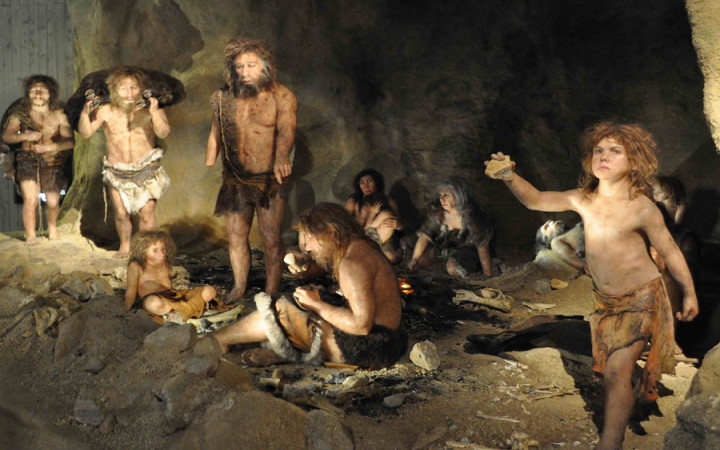Let's take a trip back in time. It's 1856, and you're working in a limestone quarry in the Neander Valley near Dusseldorf, Germany. In a limestone cave known as Feldhofer Cave, you and your fellow workers discover 16 pieces of bone, including a skull!
At first, you think the bones belong to a bear, so you hand them over to a local teacher named Johan Karl Fuhlrott. Eventually, the bones make their way to scientists who aren't quite sure what they are, since they don't look like anything they've ever seen before.
After the publication of Charles Darwin's The Origin of the Species in 1859, other scientists reexamine the bones and determine that they're fossils of an ancient relative of modern humans. In 1864, geologist William King gives this ancient human species a name: Homo neanderthalensis, based upon the location where the bones were found.
Since that time, over 400 Neanderthal bones have been found. In fact, scientists eventually learned that earlier fossil discoveries (in 1829 in Belgium and in 1848 in Gibraltar) were also Neanderthals.
So who were the Neanderthals? Scientists now believe the Neanderthals were our closest extinct human relatives, sharing approximately 99.7% of their DNA with modern humans. Although they are considered by many scientists to be their own separate species (Homo neanderthalensis), some scientists believe they could simply be a subspecies of modern humans (Homo sapiens).
The Neanderthals lived throughout Europe and Asia during the Pleistocene Epoch (often referred to as the Ice Age). Scientists estimate they died out approximately 30,000-40,000 years ago.
No one knows for sure why the Neanderthals became extinct. Some believe drastic climate change could be the culprit. Others think modern humans killed the Neanderthals. A more recent theory holds that Neanderthals interbred with modern humans until they were eventually absorbed into our current species.
Neanderthals looked quite a bit like modern humans, although they tended to be shorter and stockier. Scientists believe their bodies were specially adapted for cold weather, since they lived during the Ice Age.
To survive in the ice and snow, many Neanderthals found shelter in the limestone caves found throughout Europe and Asia. They've often been referred to as "cave men," because many Neanderthal fossils have been found in caves.
Neanderthals had large, complex brains similar to those of modern humans. They created and used tools, controlled fire, and buried their dead. Scientists believe they also lived in nuclear families and likely cared for sick and elderly family members who could not take care of themselves.
Scientists aren't sure if they had a developed language, but they think it's a likely possibility given the size and complexity of their brains. They also made and wore clothes. Although they hunted large animals, they cooked and ate vegetables regularly. Most Neanderthals lived to about 30 years of age.





